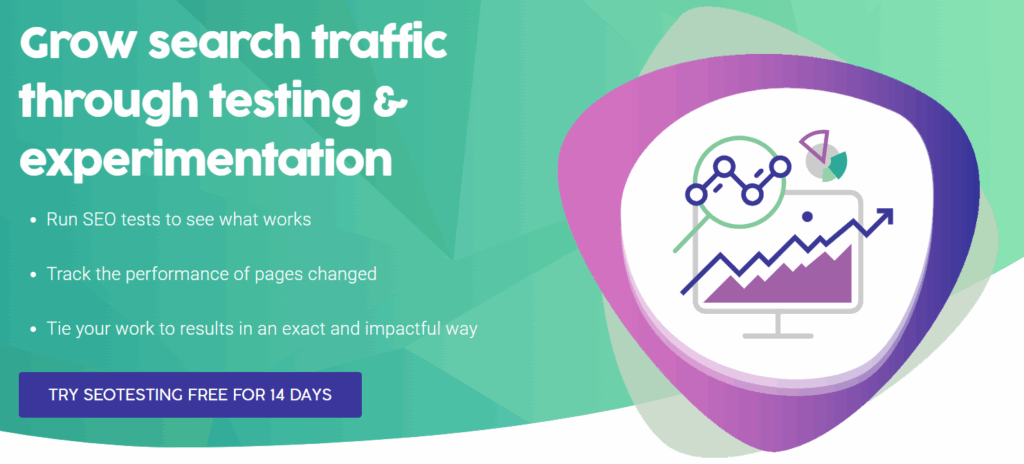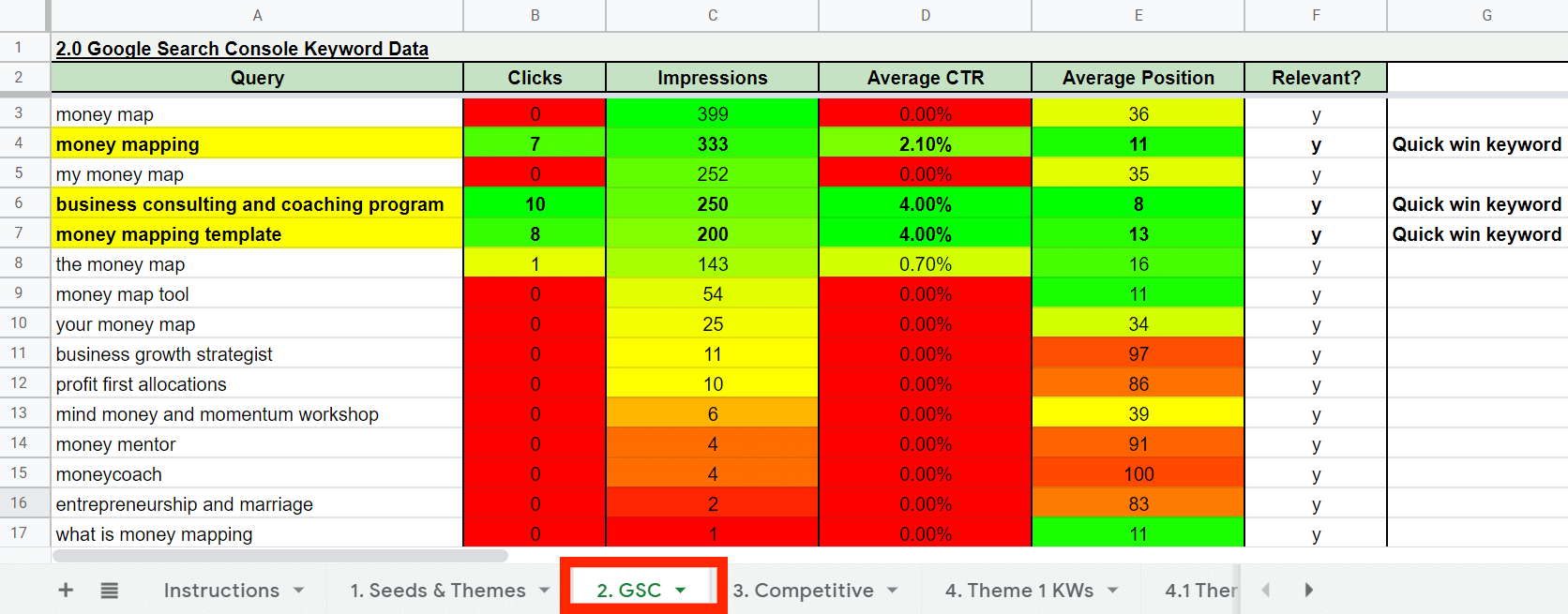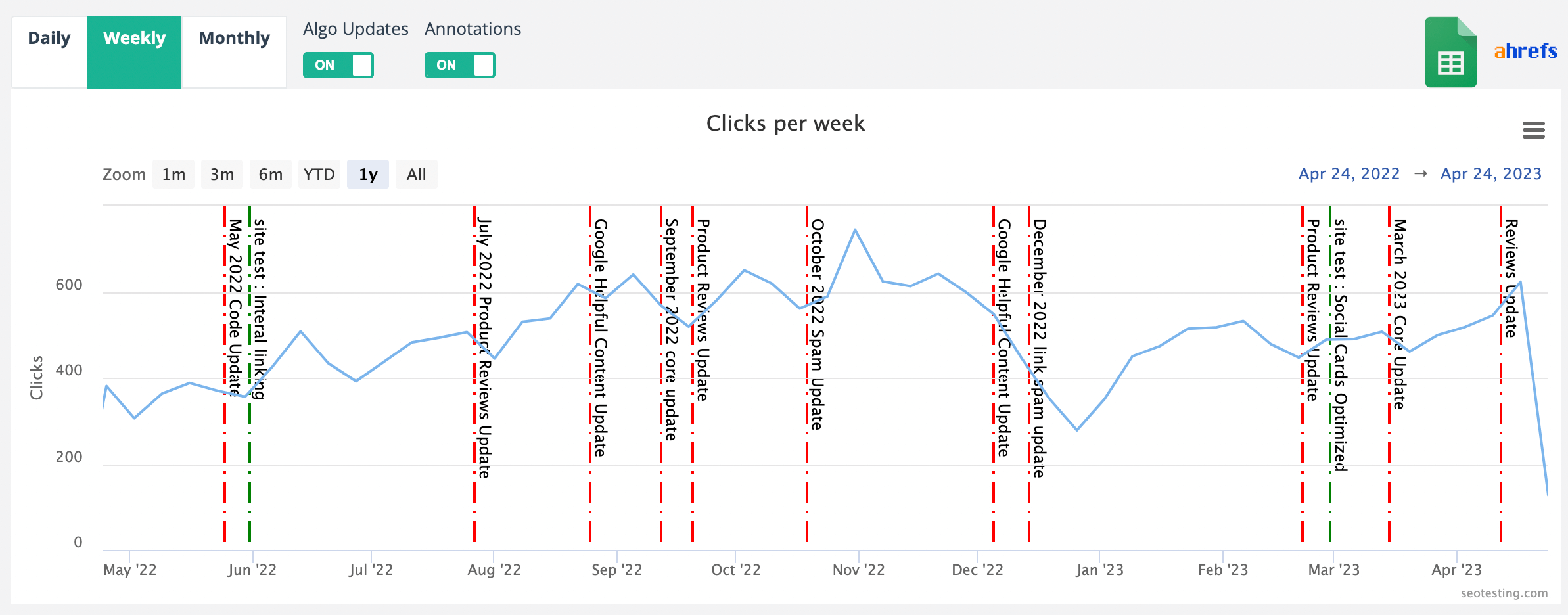At the time of writing this article, this will be my 15th year of working as an in-house SEO. I started in 2008 when I set up an online men’s clothing website straight out of University and then I took a typical career path where now I’m the Head of SEO for Online Mortgage Advisor.
I’ve worked in various industries, a wide range of budgets (4 figures to well over 6 figures) and in both e-commerce and lead generation websites. I’m still developing and learning and over the years there are things I’ve learned that I feel are essential for in-house roles.
I’d like to share these learnings and be completely transparent about some mistakes I’ve made in the past which have taught me things, at times, the hard way. Not everything in this article is about a lesson, but there are also pieces of advice I’d give generally to anyone seeking to get into SEO or are already working in SEO, in-house.
Before I begin, I want to first share what I believe should be the mantra/core values of an in-house SEO:
- Own your channel; it’s your responsibility to make sure all efforts are to drive the right type of traffic
- Keep your eyes and ears open, at all times; there’s a lot going on in a business which can affect SEO without anyone even knowing. Spot issues before they become a problem
- Plan, plan and plan; don’t be hand-to-mouth, create your roadmap and show how your efforts will drive more and more relevant traffic.
The Differences Between In-House SEO & Agency-Side SEO
As Kevin Indig explains very well…

“In the agency, you go broad. You’re exposed to lots of sites, see many different problems, and gain wide experience. It’s a great point to start an SEO career because you get such a good grasp of various issues, industries, and companies.
In-house, you go deep. You focus on a single site (maybe a few), understand the product and market deeply, and immerse yourself in a vertical. That’s where you become an expert in a space and can make a significant impact. When working for a company, you own a bigger part of the process, take a closer look at competitors, and have more time to think about the big problems.”
What this, essentially, breaks down into is the fact that, when you work as an SEO professional within an agency, you are in charge of a lot of different clients at the same time and you are often working with the client’s internal teams to get things implemented and get results.
When you work in-house, you are completely responsible, along with your team if you have one, to getting results for your business and you need to be the one responsible for getting buy-in, getting budget and getting things done.
The Three Main Problems In-House SEOs Face
Over the years, I have had a lot of time to think about the life and career of an in-house SEO specialist. One of the things I have been thinking about recently is how, essentially, all in-house SEOs face the same three problems on a day-to-day basis.
In this section, I’ll talk about what these common problems are, and then a little bit further along I’ll speak about some things that should hopefully help you overcome these problems.
Problem 1: Lack of Buy-In
The first, and probably the biggest, challenge people experience when they start working within in-house SEO is a big lack of buy-in from peers and superiors within the company they are working for.
Of course this is a big problem because, if you cannot get buy-in from the people who need to approve your ideas, you can’t get anything shipped and you can’t generate any positive results for your business.
Boiled down, a lack of buy-in from peers and managers alike will lead to stagnation.
There are a few different reasons for this, but the main reason is often a lack of education within your organisation as to what SEO is and why it works for almost all businesses. Lack of education leads to a lack of buy-in, simply because the people you need to trust in the process do not trust it.
It’s easy for us, as SEO and marketing professionals, to trust in the process because we have seen the results before. A business that’s just committed to a serious investment in bringing their SEO in-house might not be as trusting until they see results.
Problem 2: Lack of Budget
The second biggest problem often faced by in-house SEO professionals is, mainly down to the lack of buy-in issue, a lack of budget given to support SEO projects.
When joining an in-house SEO team for the first time, you will often find your budget is more limited when compared to an agency budget. Because of this, you need to be ruthless when it comes to your spend:
- Outside Contractors
- Paid Tools
- Additional Staff
It all needs to be analysed and you need to work out whether it is worth it to be spending for your team and your business.
You need to work out ways to show the value of SEO in order to get more budget for future projects. This can often be a huge undertaking for in-house SEO professionals, mainly down to finding the right things to get that buy-in (as we spoke about before) and because of time constraints within the business.
Problem 3: Lack of Direction
The third problem in-house SEOs currently face is a lack of direction within the SEO department. In a lot of cases, changes made to websites, content that’s uploaded to the company blog, and the way budget is spent can often feel a little “slapdash” for lack of a better word.
This is, probably, a culmination of the first two problems we went through. A lack of budget and a lack of buy-in from peers and managers. In-house SEOs are often scrambling to find quick wins to get more buy-in and budget that there is a lack of thought going into the changes made. Does that sound familiar, at all?
Below, I’ll go through some of the key learnings I have made over the years, some of which are sure to help the problems you have experienced above.
Keep communication open, even if you think “it will be ok”
There’s an interesting debate sometimes on where SEO sits within an organisation; Marketing or Product? Personally, I think it should sit in between. It serves Product but delivers for Marketing but equally, it serves Marketing and delivers for Product. Wherever you think it sits, keeping communication channels open is crucial to the success of SEO, whether its technical, content or even PR. Here is a quick lesson where I didn’t communicate in the way I should have.
During my time working for a well-established window blinds company, I was planning PR ideas with 10Yetis. They came up with the idea of talking about future products, designing concepts and showing the media what the future of window blinds looks like. I liked it and it was nothing like the company had done before. We drafted some ideas, I got it signed off from Marketing but I didn’t tell Product about it. I thought it would be fine. I was wrong.
The coverage began to come in and members of the Product team saw the coverage and began to panic. I spoke to them and these were some of the concerns:
- “What will people think, we are making them!??”
- “Our call centre is going to be flooded with calls!!”
- “Are you serious? That can’t even be made!”
I knew in reality, the above is unlikely to cause a real issue, but the mistake I made was not communicating the idea, plan and why. Why are we doing this, what will we gain? What are the risks involved and how do we mitigate them? All of this could have been discussed pretty smoothly.
After my lapse in communication, it really opened my eyes and I never wanted something like this to happen again. If any of my plans had departments outside of marketing involved, I would make sure I would set up a meeting with them to explain:
- What we are planning to do
- Why
- How this will impact the bottom line
Remember, not everyone knows what the value of something is, just because you work in it day to day.
From that day, the team and I made sure to communicate anything in the roadmap and this encouraged really positive dialogue, where other members of the team would suggest even better ideas to enhance projects.

Lidia Infante, Senior SEO Manager at Sanity.io

One of my main tips is around building relationships. I’ve found that using the DISC profiles really helps me create an easy framework inside myself of how to communicate with my different stakeholders.
The DISC profile classifies people in 4 types across two axes: task vs people orientation, and detail vs action orientation. Each of the 4 types has a different communication preference, and there are specific ways to persuade them.
I also like to keep track of what my stakeholders are being measured on and what they care about, so I can find the best ways to communicate with them.
Brandon Egley, Previously Head of SEO at GO Outdoors

I firmly believe that the secret weapon for any internal SEO and the advantage you can have over agencies is the relationships that you are able to build with other teams within the company. By ensuring other teams understand what benefit SEO has for them, you’ll get important information back in return to help you in your own role.
Aside from the obvious benefits of getting SEO a seat at the table with marketing teams, there’s a lot of use in dealing with other teams too. Talking to customer service teams will give you an insight into what customers are actually asking, talking to buying/merchandising teams can help you understand how products should be categorised and clustered. The more you work together, the more buy-in you have and the more buy-in you have the easier it is to get what you need signed off.
Internal search data, conversion data, traffic data, trend data can all be super useful to teams who might not always know it exists. Insight sharing is key.
Forecasting is required, no matter how much you hate it
Forecasting for any business is extremely important and it’s a requirement for all departments if they want to budget spend accurately vs potential ROI. Forecasting in SEO though is very tricky, due to the daily movements and changes from search engines tweaking their algorithms. It does however still have to be done.
In the 3 different companies I’ve worked for over the past 14 years, all have asked me to provide a forecast. Some of the questions I had were:
- “How many leads do you think we will be generating per month?
- “…by week?”
- “What’s the ROI of that project?”
I think these are all fair questions that any board / CEO / MD would ask. When you’re asked to do this for the first time, you’d like to get it as accurate as possible. There are several ways to do this, but here is my approach:
1. Plan your strategy; what needs to be done to reach business objectives?
The first step is to define your strategy; what projects are going to be implemented over the next 6 to 12 months? This will take time as you’re going to need to think about what your SEO roadmap looks like. What is the plan for content? What are the technical implementations? Any plans for PR?
Your projects will need timescales and resource allocation. Will there be design time needed? How much content is required? Are there any external costs? It’s really important you define as much as possible at this stage, as you’re going to have to calculate a Return On Investment (ROI) based on this activity and also get the budget approved.
(For the purpose of this example, I’m going to simulate discovering a new niche to create content about, which will aim to grow organic traffic and convert into sales)
2. Look at any historic data about your industry; existing opportunities
Many of the projects you define will no doubt be to grow organic traffic but there isn’t a one size fits all model when estimating a return. Every industry and niche in search is different and in every niche, there is a wide range of intent, so it’s very complicated to assess a return.
When I start investigating the intent of the keywords which I will be targeting, I’ll first see if the keyword is in Google Search Console (an existing keyword). It could be a project to improve what’s already been tried before. If the keyword is available, I’ll look at:
- What the CTR is at various positions
- Does the CTR remain the same for similar keywords
- For the page in which the keyword targets, how it currently converts in Google Analytics, what’s the conversion rate?
This helps to define a baseline based on what’s already known.
If it’s not an existing query in Search Console, something new, I look at the search intent by Googling the keywords myself and seeing what the general appetite is. If the intent is similar to the one that the website already ranks for, I then look at the same metrics above. Again, this is all about averages, so it’s best to take as large a sample size as possible.
You can also use some clever techniques to understand what the base average CTR is across your whole website at positions 1 – 10. A tool I found created by Mike Richardson uses BigQuery along with Search Console to work this all out.
https://platform.twitter.com/embed/Tweet.html?dnt=false&embedId=twitter-widget-0&features=eyJ0ZndfdGltZWxpbmVfbGlzdCI6eyJidWNrZXQiOltdLCJ2ZXJzaW9uIjpudWxsfSwidGZ3X2ZvbGxvd2VyX2NvdW50X3N1bnNldCI6eyJidWNrZXQiOnRydWUsInZlcnNpb24iOm51bGx9LCJ0ZndfdHdlZXRfZWRpdF9iYWNrZW5kIjp7ImJ1Y2tldCI6Im9uIiwidmVyc2lvbiI6bnVsbH0sInRmd19yZWZzcmNfc2Vzc2lvbiI6eyJidWNrZXQiOiJvbiIsInZlcnNpb24iOm51bGx9LCJ0ZndfbWl4ZWRfbWVkaWFfMTU4OTciOnsiYnVja2V0IjoidHJlYXRtZW50IiwidmVyc2lvbiI6bnVsbH0sInRmd19leHBlcmltZW50c19jb29raWVfZXhwaXJhdGlvbiI6eyJidWNrZXQiOjEyMDk2MDAsInZlcnNpb24iOm51bGx9LCJ0Zndfc2hvd19iaXJkd2F0Y2hfcGl2b3RzX2VuYWJsZWQiOnsiYnVja2V0Ijoib24iLCJ2ZXJzaW9uIjpudWxsfSwidGZ3X2R1cGxpY2F0ZV9zY3JpYmVzX3RvX3NldHRpbmdzIjp7ImJ1Y2tldCI6Im9uIiwidmVyc2lvbiI6bnVsbH0sInRmd191c2VfcHJvZmlsZV9pbWFnZV9zaGFwZV9lbmFibGVkIjp7ImJ1Y2tldCI6Im9uIiwidmVyc2lvbiI6bnVsbH0sInRmd192aWRlb19obHNfZHluYW1pY19tYW5pZmVzdHNfMTUwODIiOnsiYnVja2V0IjoidHJ1ZV9iaXRyYXRlIiwidmVyc2lvbiI6bnVsbH0sInRmd19sZWdhY3lfdGltZWxpbmVfc3Vuc2V0Ijp7ImJ1Y2tldCI6dHJ1ZSwidmVyc2lvbiI6bnVsbH0sInRmd190d2VldF9lZGl0X2Zyb250ZW5kIjp7ImJ1Y2tldCI6Im9uIiwidmVyc2lvbiI6bnVsbH19&frame=false&hideCard=false&hideThread=false&id=1403355337814540296&lang=en&origin=https%3A%2F%2Fadmin.seotesting.com%2Fcontent%2Fcreate&sessionId=9b04b27030e74d839fa4a11778bbfcc842928275&theme=light&widgetsVersion=aaf4084522e3a%3A1674595607486&width=550px
3. Find out the keyword volume; new opportunities
Here is the stage of keyword research, finding out the keyword volume for what you are targeting. If it’s a keyword I already have in Search Console, I’d look at the impressions and calculate what the monthly volume is (roughly). It’s important here to also factor in variants of the keyword and what else you’d expect. Keyword research is not just about one phrase, as when you rank for a term, there are several terms associated with it which will also rank. This means your projected volume for a page will be much higher than what keyword research will show you.

Image Credit: https://seo-frank.com/
In a similar fashion, if I don’t have the keyword data, I’d normally jump into ahrefs and conduct keyword research. I’d also look at variants and other possibilities for keywords and then combine it all into a table to give me a sum of what the total potential volume is.
4. Estimate the return (forecast)
Now for the tricky part. To recap, so far the following information has been collected:
- Project costs
- Estimated CTR from 1 to 10
- A rough idea of the intent
- Goal conversion rate
- Total keyword volume
This is the time to now calculate a potential ROI. For argument’s sake, let’s say the site’s average conversion rate to a sale goal is 6% and the value of a goal is £55.
Let’s also estimate that the total keyword volume from a project which we’ve just scoped out is: 2,800 visits per month.
Below is an example set of estimated CTR
- 13%
- 8%
- 6.5%
- 4%
- 2.1%
- 2%
- 1.6%
- 1%
- 2%
- 1.8%
From producing content and seeing it go live, I normally estimate a good few months before it starts generating organic traffic (for a new page). Let’s say in this example, we will estimate that by 6 months, it will have a chance at getting to position 7 on page 1 and by 12 months**, position 2:
6 months ROI
Traffic to the site : 2,800 * 2% = 56 visits
Converted traffic : 56 * 6% = 3.36
ROI : 3.36 * £55 = £184.8
12 months ROI
Traffic to the site : 2,800 * 8% = 224 visits
Converted traffic : 224 * 6% = 13.44
ROI : 13.44 * £55 = £739.2
** A huge caveat here is that the site has a history of ranking a wide range of pages in this timescale, all things being equal, not technical issues and some budget assigned for link building if needed etc.!
This is a pure estimation and there are so many variables that can either make this a close estimate or a long way off. As mentioned earlier, forecasting in SEO is extremely difficult, but there has to be some sort of logic to try and forecast.
If my method above feels like something you’d be comfortable using, just remember to state the variables at stake and how it’s not necessarily black and white (like PPC). You will need to do a lot of work; the example above is for putting live one page, but imagine a project which is to launch 20 pages for a product or something similar; the volumes start rising and the calculations become much more complicated.
Andrew Prince, SEO at Wayfair

To be a successful in-house SEO, you have to know how to calculate and communicate business value.
When building your own roadmap, you have to understand how to prioritise initiatives based on value. Since other teams are also working on their own roadmaps, an in-house SEO reliant on others has to be convincing to get a bug fixed, a test launched, or a campaign done.
You will constantly be asked about priority levels and business impacts. The more you know how to calculate and communicate value across teams as an SEO, the more impactful you and the channel can be.
Always add the “why” when creating briefs
Typical work environments are fast-paced. Projects are scoped, briefs are created and the work is planned out and drafted. I’ve reflected a lot on how I previously briefed projects and I’ve changed my approach to them a lot, for one good reason; I was seeing too many delays and it was becoming frustrating for me. I realised that the thing I was doing was actually what caused the issue.
This is how my briefing document would be structured:

When I briefed work out in the above way, work would be completed, hitting the brief, but there would always be something missing, where I’d think “ah they’ve not thought about xyz”. That was my fault. My briefs were all initially missing the ‘why?’.
Explaining the ‘why’ is especially powerful when briefing out work. It gives so much more context and insight into what it is you’re looking to be created. It allows the receiver of the brief to really put their expertise into practice, rather than working like a contractor and being told what to do. They know what the end goal is so they can add much more though from their perspective.
The briefing process is now always like this for me:

I’ve had much better results following this briefing format and much more engagement from the teams I work with. That includes developers, graphic designers and content editors.

Dealing with Google Algorithm updates
When you’re employed as an in-house SEO, all eyes will be on you during the time of major Google algorithm updates. It’s essential you know about Algorithm updates, what they mean and what they are likely to target. Knowing this information is key in your communication across the business and setting expectations.
Understand the updates
Google has over the course of time given more information on algorithm updates and it has improved in its communication. Google has created a helpful resource that gets updated whenever there is a major release and it finishes rolling out.
Each release also has topline information on what the purpose of the update is. This is where you first should be going to understand what an update is about. It will give you context on the update and what Google is focusing on.
It’s important not to make too many assumptions about what an update will focus on based solely on its general overview. It’s very difficult to truly know the factors and weighting Google applies so take this information as topline and try not to predetermine what factors will be applied by Google and what it will be looking for.
Communicating updates
Whenever I’ve worked in-house, I’ve always communicated major Google algorithm updates. This includes when algorithm updates have started rolling out when they finish and then a review of the impact. There are generally bigger movements following some major updates so it’s a bit easier to spot in Google Analytics / Search Console, to which you are able to report on part of the impact. Sometimes, however, it’s unnoticeable from the data you can see.
Side Note: A benefit of SEOTesting, here, is that you can see the confirmed Google Core Updates overlaid onto your charts in your dashboard automatically. This is really helpful when analysing the impact of larger Core Updates on your website, both positive and negative.

Don’t be afraid here of being transparent; even when algorithm updates might not go your way. The algorithm doesn’t always get things right and you’ve got to be confident with your strategy (providing of course you are doing the right things!). This is why it’s important to continuously update teams, including senior leaders/directors about how search engines work alongside the strategies you have in place. Then there should be complete trust in what you are doing as in in-house SEO and what Google is doing.
Abby Gleason (Reimer), SEO Product Manager at Scribd

When it comes to algorithm updates, I have a 4 part system:
- Know when they’re happening
- Inform your team
- Assess the impact and
- Adjust your strategy.
It’s crucial that you stay informed about when algorithm updates occur. You can easily do so by signing up for industry newsletters, following SEO news sites & experts on Twitter, or even setting up Google alerts for terms like “Google algorithm update”.
Once you get wind of an update occurring, simply let your company or team know. This builds trust since your teammates will see that you’ve got it covered. I usually send a message like, “Google has released an algorithm update starting [X date], estimating [X] days/weeks to fully roll out. We are assessing the impact and will reach out with more info when we have it.”
Next, assess your keyword rankings and organic traffic over the course of the update. Did you increase, decrease or stay neutral? Are there patterns in URLs or keywords that saw an impact? Document your findings and share with your team after it’s finished rolling out.
Finally, if you did indeed see an impact, whether positive or negative, determine if you need to adjust your SEO strategy. For instance, if you saw positive results from cleaning up old URL paths, see if there is more clean-up work you can prioritise. Or if you see a negative impact to outdated blog posts, consider making content updates a priority.
Having a strategy for when algorithm updates roll out can turn a seemingly chaotic situation into one that feels controlled and organised.
Main Skills Required as an In-House SEO
Whilst a lot of skills carry over from agency-side SEO to in-house SEO, there are certain skills that are more important when you are working for a company/brand in-house. To round off this article, we’ll go through the skills needed to really thrive and succeed as an in-house SEO.
Soft Skills
Soft skills are massively important for an in-house SEO professional, especially given the fact that a lot of the success in your role depends on your ability to get buy-in for projects, budgets for projects and team members.
The most important soft skill, in my opinion, for a successful in-house SEO professional is critical thinking. You need to be able to do everything from following a template and/or content brief to look at your SEO strategy from a “top down” view and see what needs to be done. Digital marketing, specifically SEO is changing constantly so you need to be able to change with the times.
I also, firmly, believe that a core soft skill needed from an in-house SEO is empathy. Especially if you’re in a role that requires a lot of content creation. You need to be able to put yourself in the customer’s shoes so you can create the content that they need, at the time that they need particular information. This is where a lot of your growth is going to come from, especially on the content marketing side of the business.
We often hear the phrase “don’t write for Google, write for people” and this is completely true. You need empathy to be able to harness that and make it a success for your business.
Hard Skills
Soft skills are all well and good, but you need some hard skills as well to be a successful in-house SEO. The skills you need in particular are going to depend on whether you are entering a business as a specialist (for example, technical SEO specialist or content marketer) or a generalist who has a hand in a little bit of everything, but I do believe a few skills are crucial.
Whether you are a content marketer or a technical specialist, you are going to need to have a good knowledge of keyword research in order to be successful as an in-house SEO. You need to be able to understand what keywords to target, when is best to target them and how you can leverage different keywords and keyword clusters to your advantage.
You also need to be able to understand the analytical side of SEO. So you need to be proficient in using tools like Search Console, Google Analytics (yes, this means GA4 too) and other tools in order to make data-driven decisions that will drive organic performance growth for the business.
You’ll also need to be able to effectively run and read site crawls using software like ScreamingFrog and Sitebulb. Of course, this is going to be more important if you’re joining a business as a technical marketer, but you still need to be able to understand where improvements need to be made if you’re more in a generalist or content-based role.
The above are the hard skills you’ll need in any SEO-based role, whether you’re going to be working as a generalist or specialist.
Sources to help keep you on track
SEO is ever changing, so it’s extremely important to keep up to date on the ongoing changes. Read, listen and watch from reliable sources and believe in yourself; remember, you’ve got the responsibility in-house to improve SEO performance; do your research, experiment and stick to what you know is right!
Here are my go-to resources which help me:
- Google Search Central YouTube channel: https://www.youtube.com/@GoogleSearchCentral
- Google Search status dashboard: https://status.search.google.com/products/rGHU1u87FJnkP6W2GwMi/history
- Latest news in SEO: https://www.seroundtable.com/
- How Google Search Works: https://www.google.com/intl/en_uk/search/howsearchworks/
- SEO learning hub: https://learningseo.io/
Some accounts I recommend following on Twitter:
- Google Search Liaison: https://twitter.com/searchliaison
- Google Search Central: https://twitter.com/googlesearchc
- John Mueller: https://twitter.com/JohnMu
- Search Engine Land: https://twitter.com/sengineland
- Barry Schwartz – SEORoundtable https://twitter.com/rustybrick
- Dr. Marie Haynes: https://twitter.com/Marie_Haynes
- Lily Ray: https://twitter.com/lilyraynyc
- Gary Illyes: https://twitter.com/methode
- Glenn Gabe: https://twitter.com/glenngabe
- Danny Sullivan: https://twitter.com/dannysullivan
- Aleyda Solis: https://twitter.com/aleyda
Whilst there are some key similarities between agency-side SEO and in-house SEO positions, there are some key areas where the roles differ. You have a different set of challenges to face as an in-house SEO than you would if you worked within an agency environment and you need different skills.
So whether you’re thinking of switching your agency lifestyle to the role of an in-house SEO, or you’re just here for general information, we hope the article has helped you find more and understand more the role of an in-house SEO as well as how to succeed within this massively important role.


